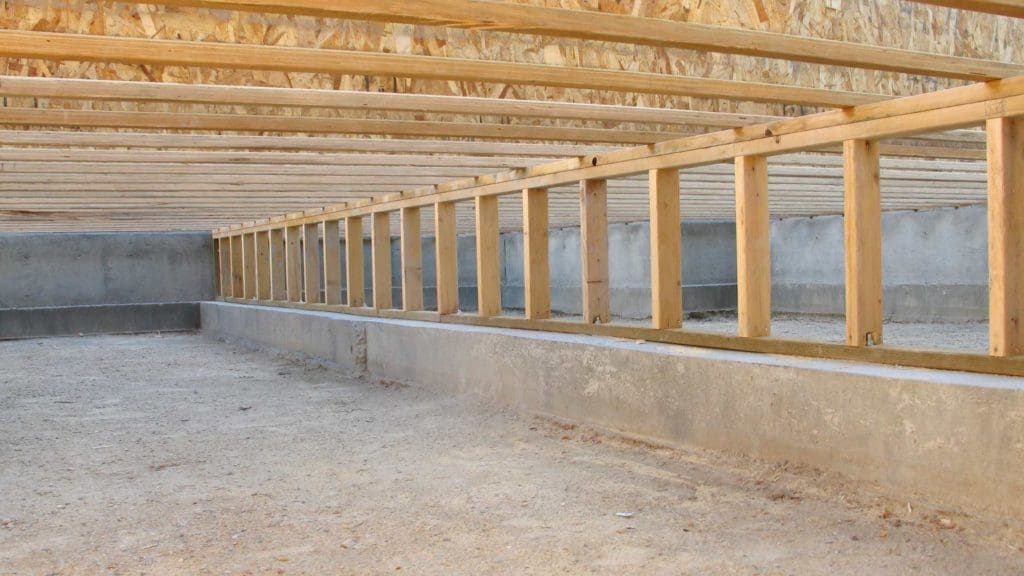A crawl space provides a cost-effective and convenient way to house heating and cooling units, ductwork, electrical wiring, and plumbing. Having all these located in your crawl space makes maintenance and repairs easier. Additionally, a crawl space improves air circulation underneath your house, which could help prevent water damage in your home.
But a crawl space can also pose some issues, especially if it’s open or hasn’t been insulated properly. Besides causing your home to overheat during the summer and lose heat in the winter, which will translate into higher energy bills, an open or poorly insulated crawl space could lead to water damage and pest infestations.
Crawl space enclosure is the only viable solution to these potential problems. Contrary to popular belief, a closed crawl space doesn’t develop moisture problems as long as the enclosure, also referred to as encapsulation, is done correctly, with the right materials. In short, crawl space encapsulation must create an effective barrier that isolates your home against pests, debris, and dust, and against moisture.
Proper Crawl Space Encapsulation: How It’s Done
Whether you hire a contractor to enclose your crawl space or intend to do it yourself, knowing the right way to encapsulate the space under your home will allow you to get all the advantages with none of the drawbacks. Here is what you need to know.
- Not all crawl spaces are ready for encapsulation. To make sure that your crawl space is ready for encapsulation, look for signs that indicate potential drainage issues around the foundation. Since poorly maintained drainage, insufficient grading, or a leaky pipe may allow excess water to collect under your home, enclosing your crawl space before identifying and addressing these problems will only make things worse. If you see standing water near or under your home or mold growing in your crawl space, have your home inspected by a foundation repair contractor. After inspecting your property, the professional will determine what remedial measures need to be implemented in order to fix the problem.
- Insulating the crawl space through careful design is the best solution. When it comes to crawling space enclosure, the installation of wall vents was the accepted standard until recently. Although wall vents are designed to encourage air circulation by allowing outside air in, many vented crawl spaces have developed moisture problems, mold, and wood rot, while also letting all types of pests in. As a result, most professionals now recommend enclosing and insulating the crawl space through careful design and construction in order to mitigate moisture problems and pest invasions in homes.
- To make the most of crawl space encapsulation, seal the floor and walls completely. The most effective way to seal a crawl space is to add a vapor barrier to the floor, walls, and piers. In general, using a polyethylene liner is one of the best methods for controlling moisture buildup. Equally important is to seal off any wall openings, cracks, and gaps that allow outdoor air to enter your crawl space. As well, make sure you insulate the areas where electrical wires and plumbing lines pass through the subfloor. An important consideration is that, even though the International Residential Code allows for both vented and unvented crawl spaces, conditioned crawl spaces to tend to perform better than vented and unvented crawl spaces in terms of energy consumption, comfort, health, and safety.
Crawl Space Enclosure: Why It’s Done
When properly designed and constructed, an enclosed, sealed, and conditioned crawl space will provide the following benefits:
- Pest control – Open crawl spaces provide excellent habitats for pests, which may seek shelter as winter approaches. Encapsulating your crawl space before the cold weather kicks in is the best way to keep pests out of your home.
- Reduced moisture content – An HVAC-conditioned crawl space can solve a host of potential moisture-related problems, including mold, mildew, and dry rot.
- Lower energy bills – A conditioned crawl space will prevent cold or warm air from entering your home because your HVAC system won’t need to work harder. In order to maintain a constant temperature, encapsulating and conditioning your crawl space can reduce your energy bills considerably. A conditioned crawl space will also keep the temperature closer to the one inside your home, preventing pipes from freezing and bursting during the winter.
- More usable storage space – A sealed, insulated, and clean crawl space can be a great place to store items you don’t use all the time. This can free up valuable space in your home.
As you’re able to see, a closed, insulated, and conditioned crawl space will provide a shield against recurring moisture problems and unwanted guests, which may contaminate the space under your home and chew through pipes, wires, framing, and structural components of your foundation. If you suspect that rodents or other pests have invaded your crawl space or any other issues may affect your foundation, schedule a free foundation inspection with Allied Foundation today!

